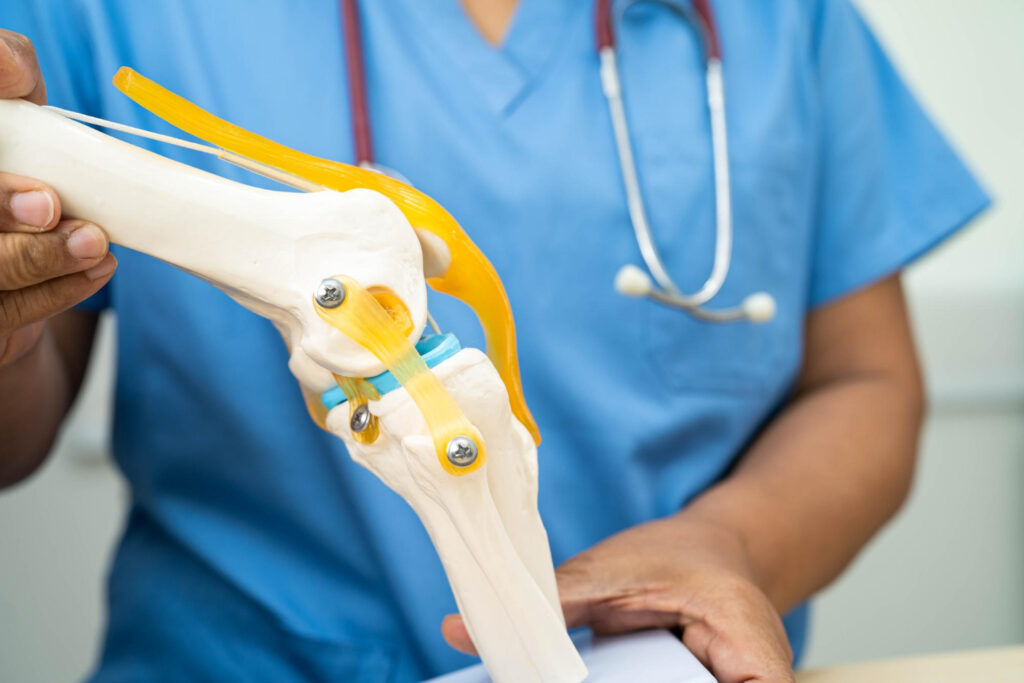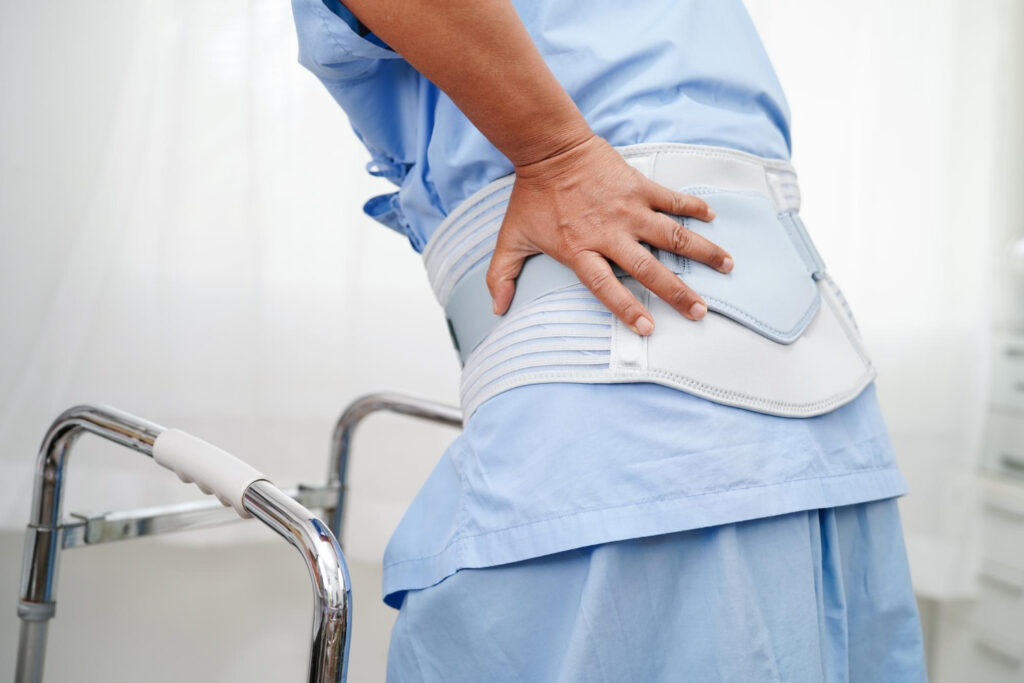Knee Replacement
KNEE REPLACEMENT “Total knee replacement is a surgical procedure of replacing the knee joint with an artificial prosthesis in cases of severe pain or deformity. With Newer Technique & Enhanced Recovery After surgery (ERAS), post-operatively patients are ensured of full biological range of movements post-surgery and are mobilised within the same day of surgery. “ The Knee Joint: The knee is the largest weight-bearing joint in the body. Nearly normal knee function is needed to perform routine everyday activities. The knee is made up of the lower end of the thigh bone (femur), which moves on the upper end of the shin bone (tibia), and the kneecap (patella), which slides in a groove on the end of the femur. Large ligaments attach to the femur and tibia to provide stability. The long thigh muscles give the knee strength for movement. The joint surfaces where these three bones move against each other are covered with articular cartilage, a smooth tissue that cushions the bones and enables them to move easily. All remaining surfaces of the knee are covered by a thin, smooth tissue liner called the synovial membrane. In a healthy knee, this membrane releases a special fluid that lubricates the knee and almost eliminates the friction. There are various causes of getting pain in knee joint. Osteoarthritis is one of the commonest cause of damage to the knee joint. Apart from osteoarthritis Inflammatory arthropathy like Rheumatoid arthritis and previous trauma or Fractures can result in damage to knee joint cartilage and structures. Freedom from PAIN of arthritic knee joint is now possible with Total Knee Replacement operation. If your knee has been damaged by arthritis or injury, simple activities such as walking or getting in and out of bed, going to market, standing for long time becomes difficult. Knee replacement surgery can relieve your pain and help you get back to enjoying normal, everyday activities. What is a knee replacement? Knee replacement surgery involves replacing damaged parts of your knee joint with metal or plastic parts. It’s most commonly used to treat pain and stiffness in the knee joint caused by osteoarthritis. Depending on the damage to your knee, it can be used to replace all of your knee joint (total knee replacement) or some of it (partial knee replacement). Choosing the Right Implant – Knee replacement has three main parts. A femoral component made of metal alloy like Cobalt Chrome, Oxinium or Titanium Alloy (Gold Knee). A tibial component made of Titanium Alloy Base plate and an Plastic insert made of Ultra High Molecular Polyethylene. A well-done Knee replacement easily lasts for 20 years. So it’s important to choose an implant which is time tested. Newer implants have a high flexion design matched with natural biomechanics of knee. So, one should choose implant which allows high flexion and natural movement of knee. Who is offered Knee replacement surgery? You may be offered knee replacement surgery if: You have severe pain, Swelling and Stiffness in your knee joint and your mobility is reduced. Your knee and calf pain is so severe that it interferes with your quality of life and sleep. Everyday tasks, such as shopping or getting out of the bath, are difficult or impossible. You’re feeling depressed because of the pain and lack of mobility. You cannot work or have a social life. How the operation is done – Knee replacement surgery is usually done either under general anaesthetic (you’re asleep throughout the procedure) or under spinal anaesthetic (you’re awake but have no feeling from the waist down). Sometimes you may have an epidural, which is similar to a spinal anaesthetic. Once you’ve been anaesthetised, the surgeon makes a cut (incision) on the front of your knee. The arthritic part of your thigh bone (femur) and Leg bone (Tibia) is removed and prepared for placement of new Knee replacement parts. A trial of correct size and function is done, and final Knee replacement components are implanted. The plastic insert is locked to Tibial component. The knee cycles through various movements to ensure full function of your new Knee joint. The operation takes up to 1-2 hours. POSSIBLE RISKS – Knee replacement is one of the most successful operations done on millions of patients worldwide. As with any operation, knee replacement surgery has risks as well as benefits. Most people who have a knee replacement do not have serious complications. After having a knee replacement, contact your doctor if you get: Hot, Reddened, Hard or Painful areas in your leg in the first few weeks after your operation. Although this may just be bruising from the surgery, it could mean you have DVT (deep vein thrombosis) – a blood clot in the leg. Chest pains or Breathlessness- Although it’s very rare, you could have a blood clot in your lung (pulmonary embolism) which needs urgent treatment. To reduce your risk of blood clots, you’ll be given blood-thinning medicine and compression stockings. Moving your legs as soon as you can after the operation is one of the best ways to prevent blood clots. Check with a physiotherapist what you should be doing. Infection – Knee replacement surgery is done in an ultra-clean operating theatre and antibiotics are given during the operation. But in less than 1 in every 100 operations, an infection may still happen. Very rarely, the knee replacement may need to be “washed out” or a new replacement may be used. It’s normal for the wound to be slightly red and warm to touch while healing. However, if you feel unwell, the pain is getting worse or the wound starts to leak fluid, contact the specialist. Before the Surgery – After your decision to go in for a joint replacement you should be aware of the basic things to be done before surgery. Such as – Suitable prosthesis for you. The cost of your prosthesis. Total Hospital stay & cost of hospital stay. The Blood, Heart and Chest investigations. Get these investigations 1 week before the date



